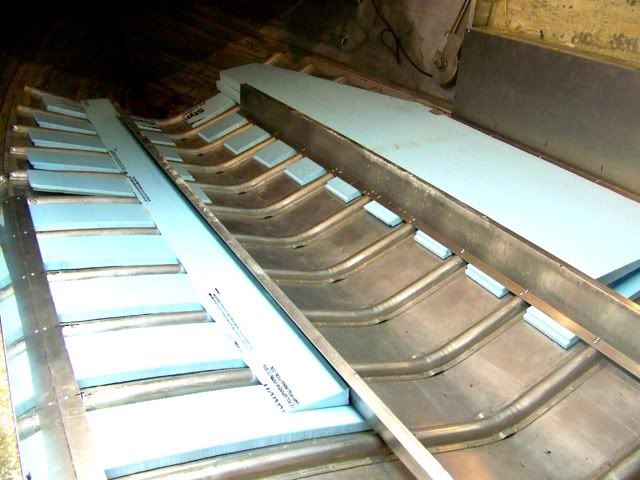I spent all day out in the 98 degree heat shoveling waterlogged foam. The factory foam was just poured directly into the empty hull. This seems like a HUGE problem to me. This puts the foam directly in the bilge. Any water coming from the anchor locker drains to the bilge. Any water coming in the boat will run to one side or another of the floor and into the bilge. Any leaking rivets and going to seep into the bilge. With your flotation foam just laying in it! Not to mention that aluminum boats are not know for their exceptional drainage due to the ribs blocking the water from moving to the rear.
Has anyone come up with a better idea? I have seen the foam pool noodles idea, but that is not what i am looking for. Has anyone ever used some sort of spacer to keep the foam from direct contact with the hull? Something to allow the water running off of the floor edge to move freely to the keel? And to allow water to move as freely as possible to the rear along the keel?
I was thinking maybe some sheets of that corrogated plastic sign material. You know, the stuff that election signs are made of. I think the holes in this are too small to allow good flow over the years. They would probably become clogged. But you get the idea Maybe even lat some relatively stiff, thin plastic over the ribs, then pour the foam on top of this, leaving a breathing area under the foam.
Has anyone come up with a better idea? I have seen the foam pool noodles idea, but that is not what i am looking for. Has anyone ever used some sort of spacer to keep the foam from direct contact with the hull? Something to allow the water running off of the floor edge to move freely to the keel? And to allow water to move as freely as possible to the rear along the keel?
I was thinking maybe some sheets of that corrogated plastic sign material. You know, the stuff that election signs are made of. I think the holes in this are too small to allow good flow over the years. They would probably become clogged. But you get the idea Maybe even lat some relatively stiff, thin plastic over the ribs, then pour the foam on top of this, leaving a breathing area under the foam.
























